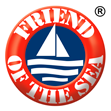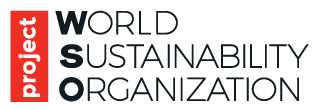Cloudy Bay Clams has successfully undergone both fishery and chain of custody audit and its surf clams can now carry Friend of the Sea international sustainability seal of approval.
The audited fishing vessels for storm clam (Mactra murchisoni), diamond (Spisula aequilatera) and moon shell (Dosinia anus) and Tua Tua (Paphies donacinia), were found to be compliant with all Friend of the Sea criteria for sustainable fishery.
The target stocks in the three identified fishing areas (within FMA 7 and FMA3 on the north-east coast of the South Island of New Zealand), are not overexploited and overfishing is not occurring.
The Total Allowed Catch is set and monitored by both the company and the Ministry of Primary Industry (MPI). Based on stock assessments and the results of fisheries monitoring quota are allocated for each FMA every year.
The clams are harvested from a sandy substrate along the coastline. The fishing method is based on a hydraulic winnowing clam rake, designed and developed by the company itself. The Clam Rake mesh is 10mm Dia and no nets are used.
The use of water jets is designed to maximize catch, minimize mortality of clams and minimize the effects of dragging the dredge through the sand. The only by-catch is the occasional paddle crab which represents less that < 1% of the catch. If alive and unharmed, they are returned to sea.
Fishing is not allowed in protected areas. GPS records of the area harvested were available for every single vessel. Marine GPS tracking and navigation systems are fitted to all vessels supplying Cloudy Bay Clams, thus making all fishing trips traceable. Fishing areas are harvested in ‘paddocks’ within the designated fishing (QMA) areas. The downloading of this data is automated and hence unequivocal and non-forgeable.
According to NZ legislation all of the catch is recorded on the Catch Landing Effort Return (CLER) as well as any discards on the vessel (e.g. return of undersized live clams to sea) and brought onshore. Accurate data and information on every catch reporting fishing area, time, and quantity are available. Reporting activity is subject to MPI auditing.
Waste and energy management systems are in place and implemented.
“Friend of the Sea certification confirms our efforts and continuous commitment to sustainability” explains Mr. Mike Ponder, Cloudy Bay Clams General Manager “and it represents an important added value for our product”.
For more information, please contact:
Founder and Director – Mr Paolo Bray
Friend of the Sea
info@friendofthesea.org
www.friendofthesea.org
General Manager – Mr. Mike Ponder
Cloudy Bay Clams
mike@cloudybayclams.com
www.cloudybayclams.com
Friend of the Sea
Friend of the Sea is an international non-profit certification scheme for products from sustainable fisheries and aquaculture. Certified products are fished from not overexploited nor IUCN Redlisted stocks and with selective methods which do not impact the seabed. Those originate from aquaculture are reared with respect of critical habitat, with no use of antifoulants, GMOS and growth hormones.
Over 250 companies in 50 countries worldwide have relied on Friend of the Sea to certify the sustainability of the origin of their products. An estimated 40% of applications either do not qualify for audit (eg: because targeted stock is officially overexploited or data deficient) or else they do not pass the actual onsite audit (for non conformity with other requirements). Selectivity provides further assurance to consumers on the reliability of the certification. Nowadays 70 different species are available on the market with Friend of the Sea seal of approval.
Cloudy Bay Clams
Cloudy Bay Clams is the pioneer in the industry of harvesting surf clams along the coast of new Zealand. Living in New Zealand’s pristine coastal waters, surf clams are native shellfish existing in the turbulent food-rich surf zone in a depth of up to 10 metres. This environment ensures the shellfish develop outstanding quality and taste. The shellfish are exported live and blanched, still with their shells to maximize flavor and freshness. Harvesting techniques have developed from extensive research that ensures Cloudy Bay surf clams reach the market in perfect condition.



